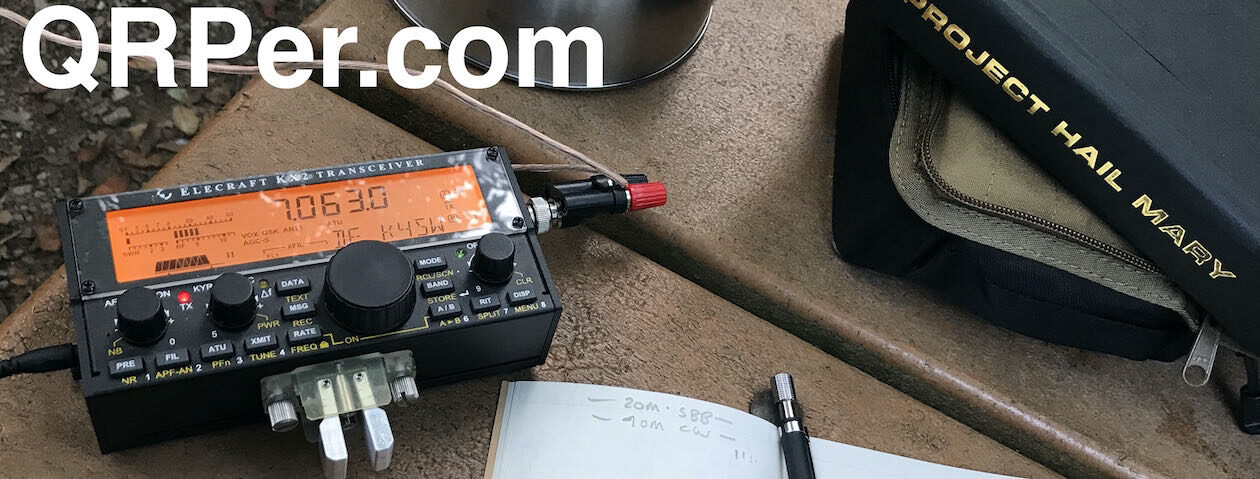Many thanks to Malen (VE6VID) – Canada’s first SOTA Double Mountain Goat – who shares the following article about his portable field radio kit which will be featured on our Field Kit Gallery page. If you would like to share your field kit with the QRPer community, read this post.
After being prompted by Vince (VE6LK) I am sending in my humble lightweight HF setup. The core of the setup is an Elecraft KX2 with a few goodies bolted onto it.
My station consists of KX2 with tuner, end plates with lexan cover, external 4s LiPo (1100mah) battery, power cable that is fused and has switched diodes (voltage reducer), an Amazon speaker and earbuds, a modified UV5R microphone (I’m an SSB guy for now), and a homebrew 65 ft EFHW. It’s all carried in a large water bottle case by Condor and weighs in at just under 3lbs. That case also fits an Icom IC-705 or the Elecraft KX3.
I have approximately 300 SOTA activations with this along with various masts. These activations range from easy 10 pointer strolls in Arizona and Manitoba to strenuous (over 1000 metres of gain) 4 pointers in the Alberta Rockies along with summits in VE5, VE7 lands tossed in as well.
By using old Altoids tins for storage for earbuds and the mic, everything fits into the case with the antenna laying on top. I ended up doing some trimming of the kite winder to fit with ease on top of the case.
Here is the basic setup laid out.
The battery will last me for two ten to fifteen minute activations without having to switch the diodes out of line.
When solo activating in VE6 land, I use the Amazon external speaker to make noise to let the local four legged critters know I am there.
After a few years of using a dipole on treed summits, which at times can be troublesome to setup, I built a 49:1 EFHW. When using the EFHW I typically set is up as an inverted V with a mast, invert L with trees. The antenna is a homebrew 49:1 using a non-standard size type 43 toroid, SOTAbeams antenna wire 65 ft long, bulkhead male BNC for connecting directly to the radio.
Trying to go compact, not necessarily light, I ditched the Elecraft mic for something with a small footprint, a mic that started life as an UV5R mic / earbud combo from Amazon . By replacing the cable with a Walmart 3.5mm TRS cable and adjusting the menu on the radio, it works great.
Take care, Malen Vidler, VE6VID
Vince’s notes: Malen is Canada’s first SOTA Double Mountain Goat. You can check out his YouTube channel here. He is soft-spoken and deeply knowledgeable on SOTA and Amateur Radio. He is one of my go-to people when I don’t understand something in these areas.











































